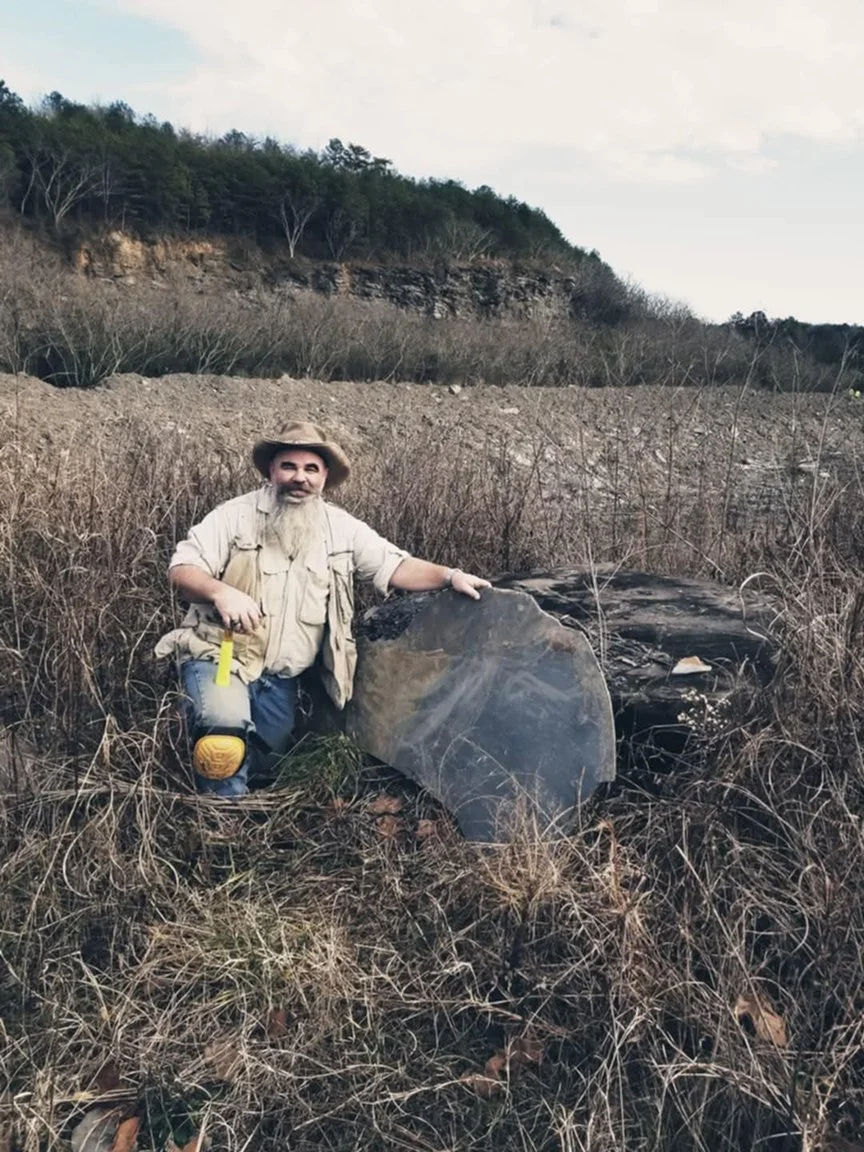Alabama Teacher’s Fossil Find Becomes Historic Discovery
By: Shelia Mader
What started as a broken shark tooth in the Chipola River has evolved into one of the most significant fossil discoveries in the world, thanks to Marianna native and longtime Alabama biology teacher, Ashley Allen.
Allen, a 1988 graduate of Marianna High School, has just completed his 31st year in education, with 27 of those years at Oneonta High School in Blount County, Alabama. His journey into paleontology, however, took a sharp turn during college orientation at what is now the University of West Alabama.
"I brought that little shark tooth I’d found in the Chipola to orientation and showed it to the chair of the biology department," Allen recalled. "He pointed me to Richard Thurn, the university’s sole geologist. That moment changed everything."
Thurn’s enthusiasm was contagious, and soon Allen was paired with graduate students to explore local fossil sites near Livingston. The fossil-hunting bug bit hard, and what began as a casual interest became a lifelong pursuit.
Fast forward to the fall of 1999, Allen was teaching at Oneonta and encouraging his students to collect their own fossils. During one such class discussion, a student named Jesse Burton mentioned his grandmother owned a coal mine.
“I thought he was joking,” Allen laughed. “Turns out he wasn’t.”
That coal mine, Union Chapel Mine in Walker County, would go on to become one of the most important fossil sites in the world.
During his first scouting trip, Allen discovered several fossil impressions, including a well-defined trackway in the ancient mud, 312 million years old. That marked the beginning of something much bigger than he ever imagined. Over several trips, Allen uncovered trackways of ancient tetrapods, four-limbed vertebrates predating the dinosaurs.
“I found a slab with calamites, an extinct plant, and right alongside it was three incredibly distinct salamander-like footprints,” Allen recalled. “I knew we had something extraordinary.”
The excitement escalated with each new trip. Allen brought his finds to the Alabama Paleontological Society’s December 1999 meeting, where they caused a stir. By January 2000, the site was hosting group trips, despite rain, cold, and mud.
The pivotal moment came when renowned paleontologist Steve Minkin visited and recognized the site’s significance. Minkin, for whom the site is now named, spearheaded the effort to catalog the fossils with a unique “track meet” event at the Alabama Museum of Natural History. Volunteers categorized and photographed thousands of trace fossils, creating an unprecedented database accessible worldwide.
That effort drew international attention, including from Hartmut Haubold, the world’s leading expert on pre-dinosaur vertebrate trackways. After visiting with his son, Haubold called Union Chapel “the best trace fossil site from the Carboniferous period in the world”, outshining even Canada’s Joggins Fossil Cliffs, a UNESCO World Heritage site.
What followed was a multi-year preservation effort. Today, the site is managed by the Alabama Paleontological Society and is owned by the Alabama Department of Conservation and Natural Resources.
Though access is restricted, supervised educational visits are encouraged. “We bring out everyone from elementary students to PhD researchers,” said Allen. “We want people to experience this site, but responsibly.”
Most fossils can be taken home by visitors, provided they’re not sold or unique scientific finds. Those rare discoveries are donated to the McWane Science Center in Birmingham or, in some cases, the Smithsonian.
Allen, a former president of the Alabama Paleontological Society, still leads many of the fossil hunts himself. He’s also a family man. His wife, Marianne Allen, is the town clerk in Highland Lake. The two met at Livingston. They have a daughter and a son.
Reflecting on the impact of his discovery, Allen remains humble: “It started with a shark tooth in the Chipola River. I never expected it would lead to helping uncover one of the most important fossil sites on Earth.”
And thanks to one teacher’s curiosity, and a student’s tip about his grandmother’s coal mine, the story of life on Earth just got a little clearer.

